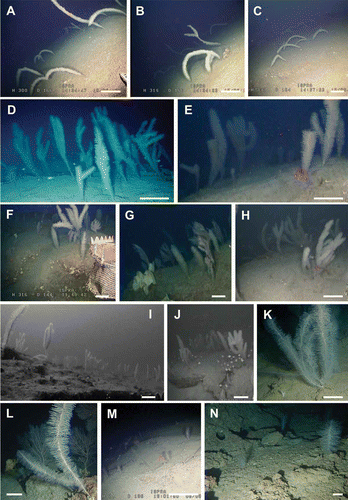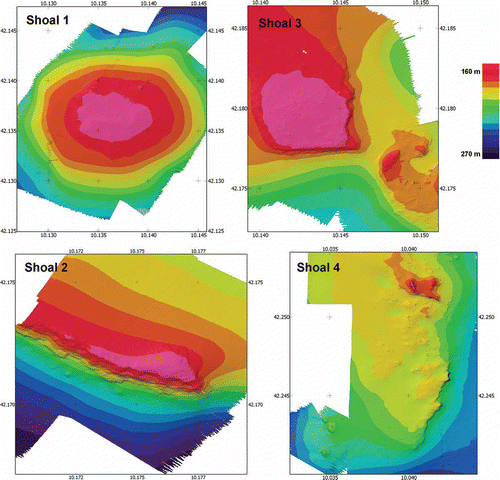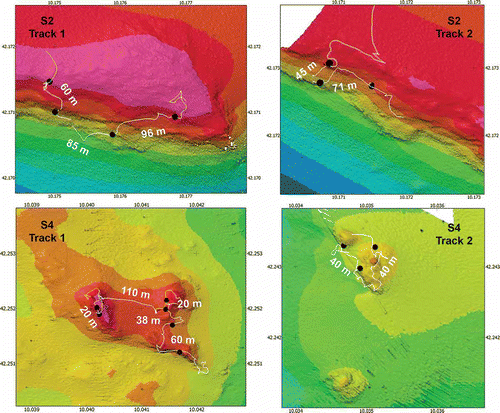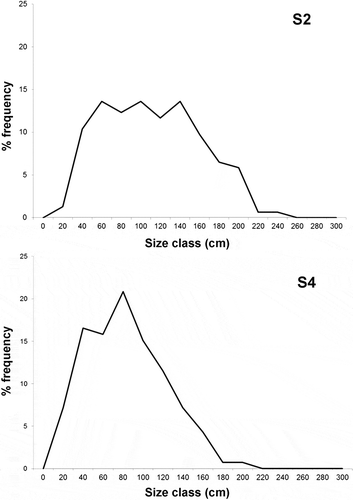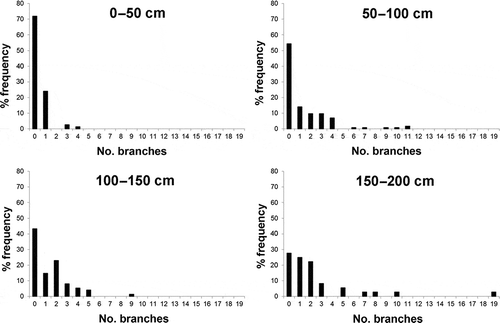Figures & data
Figure 1. Sampling sites. Location of the studied shoals off the coasts of Montecristo Island (Tuscan Archipelago, Tyrrhenian Sea, Italy).
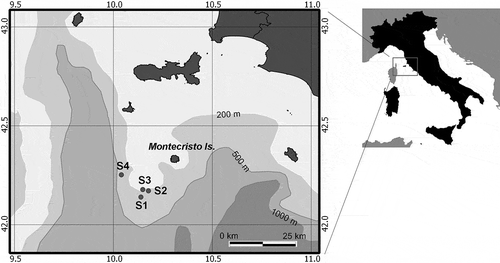
Table I. Summary of the sampling data for the four study areas.
Figure 3. Parantipathes larix. A, specimen with a greatly ramified corallum showing branches directed upwards and downwards. B, monopodial specimen with no lateral branches. C, pluriserial arrangement of the pinnules around the main stem. D, knots of pinnules around the central stem. E, groups of small spines on the stem. F, spines in three portions of a pinnule, from base to apex. G, close-up view of the pinnular spines. H–I, photographs of living polyps showing the typical white coloration. J, fertile female polyp (white arrow indicates eggs). K, spirocyst. L, basitrich isorhiza. M, mastigophore. Scale bars: A, B, 10 cm. C, D, H, 1 cm. I, 0.5 cm. E, F, J, 1 mm. G, 0.2 mm. K–M, 5 μm.
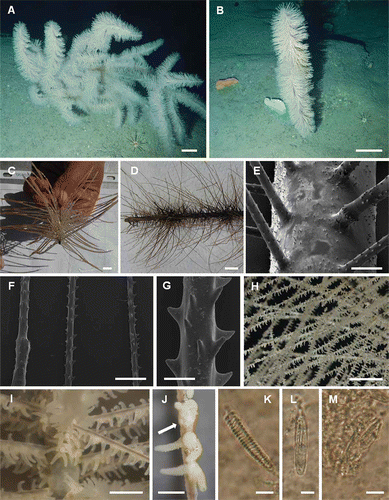
Figure 4. Shape of the corallum and associated fauna of Parantipathes larix. A–B, branched specimens of P. larix showing distinct knots of lateral ramifications. C, pair of Anamathia rissoana covered by unidentified athecate hydroids. D, unidentified species of ostracod living among the coral ramifications. E, dead basal portion of the stem covered by hydroids and Filograna spp. F, school of Macroramphosus scolopax swimming among the coral colonies. Scale bars: A, B, E, F, 10 cm. C, 5 cm. D, 0.5 cm.
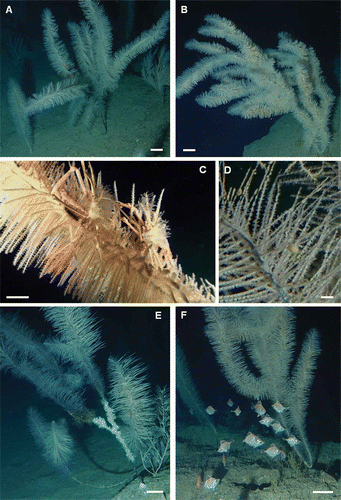
Figure 5. Species composition of the four studied target communities (number of colonies or specimens m−2 ± SE).
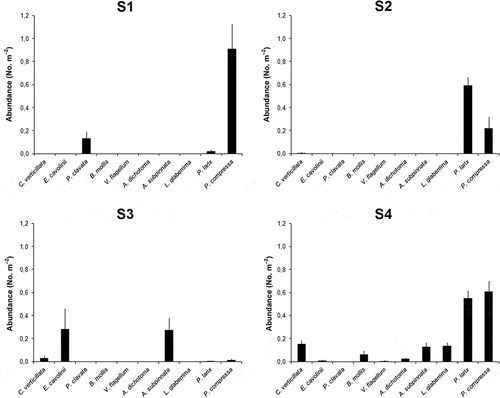
Figure 6. Patches of Parantipathes larix. A–C, patches of tall, poorly branched colonies on S2 bent towards the inclined silted bottom. D–E, dense forests of P. larix on flat rocky elevations in S4. F–J, examples of coral patches on the Montecristo shoals. K, branched specimen from the Gulf of St. Eufemia (130 m depth). L, colony from a rocky shoal off Carloforte (Sardinia), 140 m depth. M, small colonies from Vedove Shoal (Liguria), 200 m depth. N, small colonies from Candelieri Shoal (Campania), 130 m depth. Scale bars: A–J, M, 50 cm. K, L, N, 10 cm.
